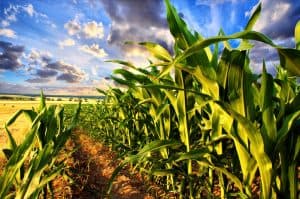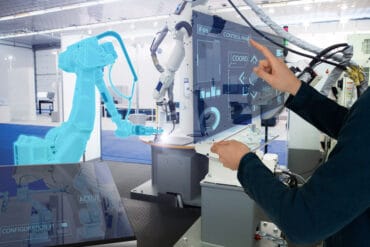
With technology resources at their fingertips, sustainability goals start on the farm, with the farmer, and it’s a responsibility they don’t take lightly.
Our global society is facing a big challenge: With nearly 10 billion people expected to inhabit the globe by 2050, research shows that global food demand will rise by 70 percent. At the same time, the availability of arable land continues to decline, so that means we need to produce more food on less land. Feeding the world – and doing so sustainably – starts at the farm. And automation is playing a key role in achieving this goal.
No one is more proactive and protective of the land than farmers. They strive to make the most of every seed and every resource, with the ultimate goal to be both profitable and sustainable. That’s why many are turning to technology. As a result, in a highly unpredictable industry, precision agriculture is enabling stronger decision-making so that farmers can do more with fewer inputs.
Addressing variability with automation
The main constant in agriculture is variability: weather, soil conditions, labor availability, and more. The job at hand isn’t tending to a backyard garden; rather, many farms are as big as 900 New York City square blocks. You can imagine the scale of variability on a farm that size, with upwards of 750 million plants.
The key to meeting growing food demands in a sustainable way is producing consistent quality and high yield even in the face of intense variability. Technology enables farmers to do so at scale through a combination of sensors, geospatial intelligence, AI, and more.
Every time a smart machine passes through a field, it’s registering sensor and geospatial intelligence to inform decisions and help farmers make the most sustainable choices for their business and the environment. For example, when it comes to planting crops, a farmer will place millions of seeds into the ground. Rather than having to place them one-by-one in the field themselves, all while accounting for the specific location conditions, farmers can turn to automation.
Informed by historical data from the farmer, the planter is also outfitted with sensors that are constantly reading a number of factors like seed spacing to account for the current conditions, making adjustments in real-time as needed. Since planting requires extreme precision for the best chance at healthy plants, an advanced planter can place seeds automatically, at the right depth and distance from one another, at a rate of 100 seeds per second. This means that farmers aren’t wasting resources, and they’re setting an optimal foundation for the plant’s success.
Enhanced guidance
The technology at play in physically executing tasks on the farm is crucial in farming sustainably, and another component is guidance. The reason why the planter knows exactly where to place each seed optimally is because of precise geospatial intelligence. GPS positioning in farming equipment is extremely precise, much more than your smartphone, for example, within 2.5 centimeters of accuracy. This means machine learning cameras, sensors, and the equipment itself knows at all times where it is, where other machines are, and where they have been. This, in turn, eliminates machine overlap in the field, saving fuel, reducing unnecessary inputs, and minimizing the impact on soil.
In using GPS, farmers have more precise management capabilities of their farms. One use-case is self-driving, which has been possible on the farm for over twenty years. Taking the burden off the farmer, GPS technology and correction signals guide vehicles to repeatable accuracy through the field, allowing the operator to focus on other ways to improve operations. While self-driving, the vehicle also deciphers crop location so that the heavy equipment doesn’t run over and damage any plants.
With each pass in the field, the equipment is guided using GPS to identify field boundaries and areas meant for roads, irrigation systems, and more. For example, during planting, a machine will recognize a body of water and know to shut off the appropriate robots on the machine, so no seeds are distributed. Similarly, when farmers need to spray their plants with nutrients, the robots controlling what herbicides are sprayed will automatically turn off should the machine travel through an area where distribution isn’t needed.
Farmers are the ultimate stewards of the land. They understand first-hand how sustainability practices impact their own work and the ability to serve the world. With automation and technology resources at their fingertips, sustainability goals start on the farm, with the farmer, and it’s a responsibility they don’t take lightly.





























